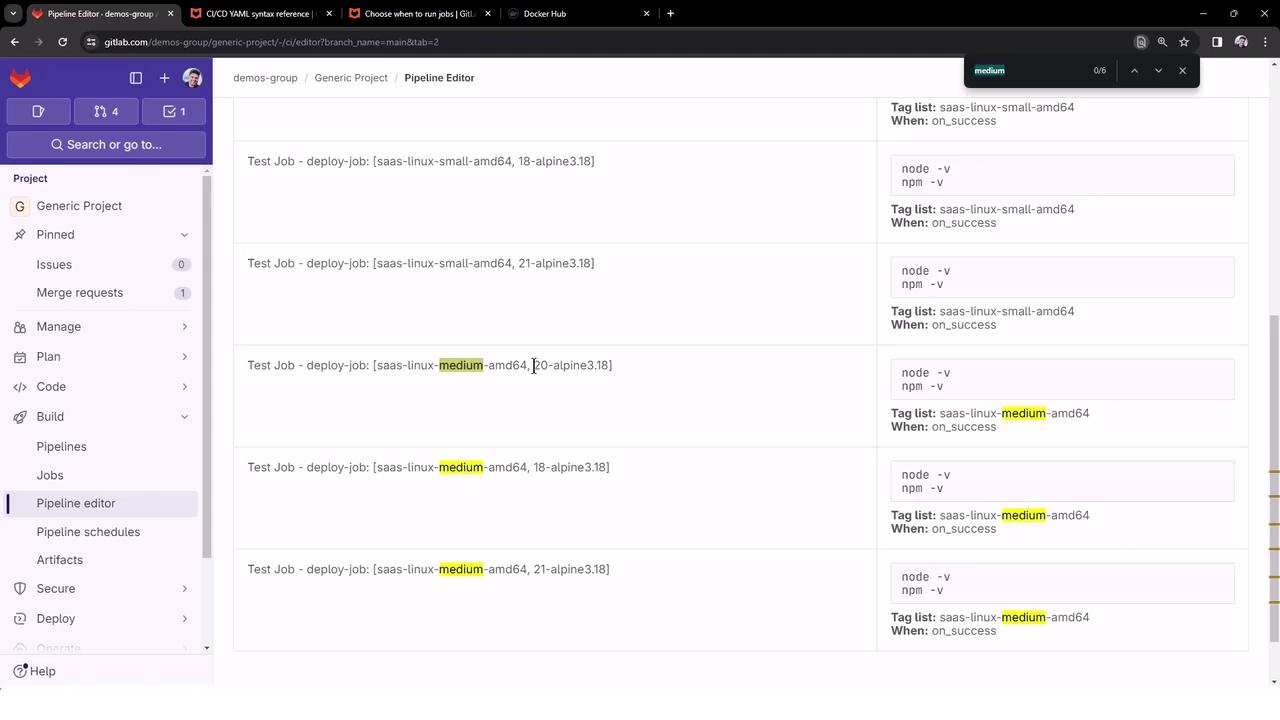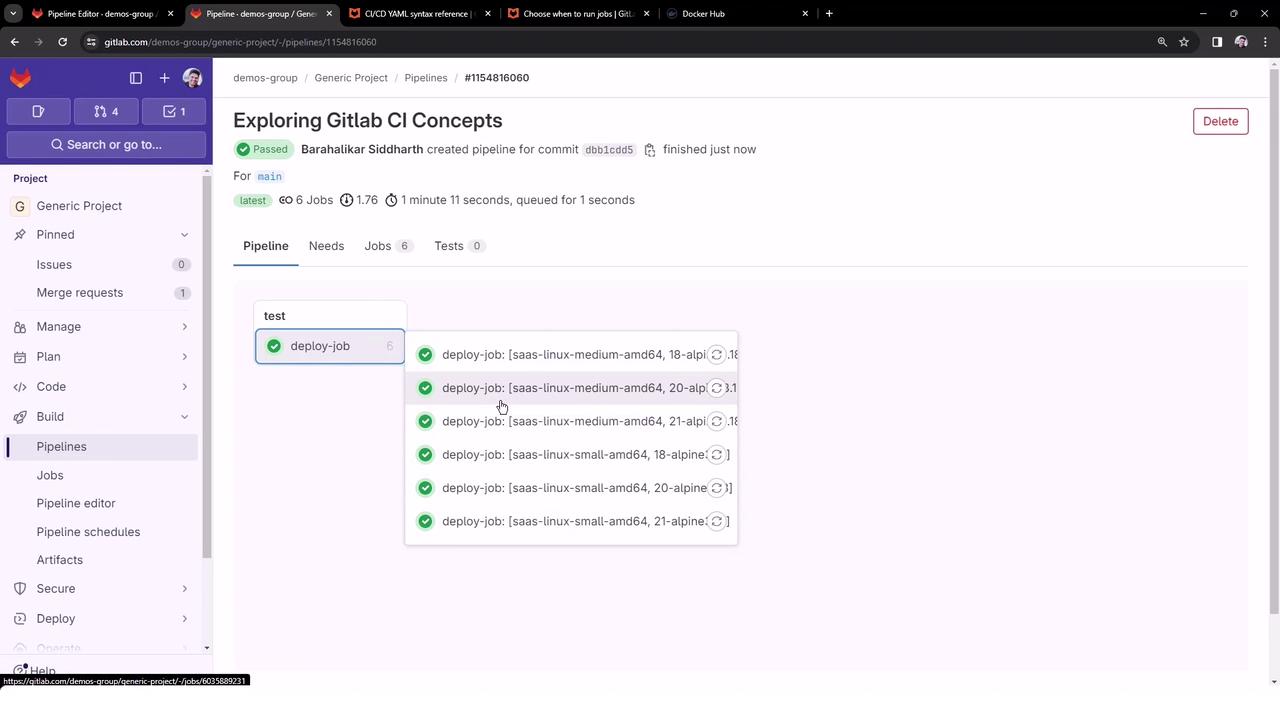GitLab CI/CD: Architecting, Deploying, and Optimizing Pipelines
Architecture Core Concepts
Parallel Matrix
In this lesson, we’ll demonstrate how to accelerate your GitLab CI pipelines by splitting workloads across concurrent jobs. You'll learn:
- How to shard a large test suite using the
parallelkeyword. - How to run jobs across different environments or versions with
parallel:matrix.
For more details, refer to the GitLab CI/CD parallel jobs documentation.
1. Sharding Test Suites with parallel
Running a monolithic test job can lead to long feedback loops. For example, a 100-test RSpec suite might take ~20 minutes in a single job. You can reduce this by splitting tests into N segments:
test:
stage: test
image: ruby:3.2
script:
- bundle install
- rspec --profile --format documentation
parallel: 5
This creates five clones of the test job. Each instance runs roughly 20 tests, cutting overall runtime by ~80%.
Note
GitLab automatically sets $CI_NODE_INDEX (starting at 1) and $CI_NODE_TOTAL for each parallel job. Use them to customize test split logic.
2. Running Jobs Across Multiple Dimensions with parallel:matrix
When you need to validate or deploy across different environments—like OS types or runtime versions—parallel:matrix provides a clean, DRY approach. Instead of duplicating job definitions, define variable axes in a matrix.
2.1. Base Deployment Job
Here’s a simple deployment job that prints Node.js and npm versions:
workflow:
name: CI with Parallel Matrix
rules:
- if: '$CI_COMMIT_BRANCH == "main"'
when: always
variables:
DEPLOY_ENV: "production"
deploy-job:
stage: deploy
resource_group: production
timeout: 10m
image: node:20-alpine3.18
script:
- echo "Deploying to $DEPLOY_ENV"
- node -v
- npm -v
This single job definition can be extended with multiple parallel axes.
2.2. Example 1: Varying Runner Machines
To target different runner machines without duplicating the job:
deploy-job:
stage: deploy
resource_group: production
timeout: 10m
parallel:
matrix:
- RUNNER_MACHINE:
- saas-linux-small-amd64
- saas-linux-medium-amd64
- windows
- macos
tags:
- $RUNNER_MACHINE
image: node:20-alpine3.18
script:
- echo "Using runner: $RUNNER_MACHINE"
- node -v
- npm -v
This configuration spawns 4 parallel jobs—one per runner machine.

Warning
Ensure each runner has the appropriate tags configured to match $RUNNER_MACHINE. Otherwise, jobs may remain pending.
2.3. Example 2: Combining Runners and Node.js Versions
You can further expand the matrix to cover multiple Node.js versions:
deploy-job:
stage: deploy
resource_group: production
timeout: 10m
parallel:
matrix:
RUNNER_MACHINE:
- saas-linux-small-amd64
- saas-linux-medium-amd64
NODE_VERSION:
- '20-alpine3.18'
- '18-alpine3.18'
- '21-alpine3.18'
tags:
- $RUNNER_MACHINE
image: node:$NODE_VERSION
script:
- echo "Runner: $RUNNER_MACHINE, Node.js: $NODE_VERSION"
- node -v
- npm -v
This results in 6 parallel jobs—covering all combinations of runner machines and Node.js images.

Once complete, the pipeline dashboard will display six successful deploy jobs:

3. Matrix Configuration Overview
| Variable | Values |
|---|---|
| RUNNER_MACHINE | saas-linux-small-amd64, saas-linux-medium-amd64,<br>windows, macos |
| NODE_VERSION | 20-alpine3.18, 18-alpine3.18, 21-alpine3.18 |
4. Conclusion
By using parallel and parallel:matrix, you can:
- Drastically reduce CI feedback loops by sharding tests.
- Validate or deploy against multiple environments without redundant job definitions.
Start optimizing your GitLab CI today!
Watch Video
Watch video content